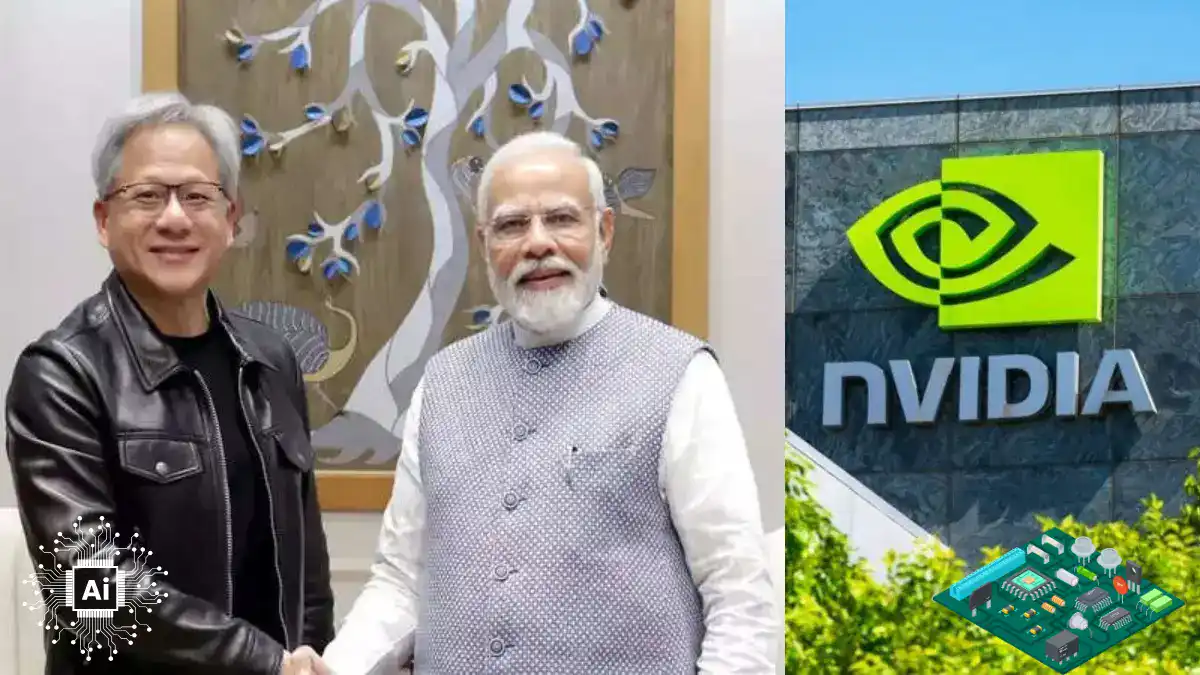
Nvidia, one of the world’s leading tech companies, has proposed a partnership with India to co-develop a new generation of semiconductor chips. This collaboration aims to boost India’s position in the global semiconductor industry, an essential part of modern technology. But what does this mean for India and the world? Let’s explore how this partnership could change things in a big way.
What’s Happening?
Nvidia has come forward with a plan to work closely with India to create advanced semiconductor chips. These chips are at the heart of many of today’s electronic devices, from smartphones and computers to cars and even medical equipment. By teaming up with India, Nvidia hopes to combine its technical expertise with the country’s growing tech capabilities. This partnership is expected to benefit both parties, helping India establish itself as a key player in the global semiconductor market while supporting Nvidia’s mission to stay ahead in the tech world.
Why India?
India has been emerging as a significant force in the technology space. With its large pool of skilled engineers and a government keen to develop its semiconductor industry, India is the perfect partner for Nvidia. The Indian government has already introduced several initiatives to strengthen its chip-making capabilities. This partnership with Nvidia could accelerate those efforts by giving India access to cutting-edge technology and industry expertise.
The global demand for semiconductors is growing rapidly, especially as more devices become “smart” and connected. This collaboration will allow India to contribute to that demand, reducing the world’s reliance on a few other countries that currently dominate the chip-making market.
How Does This Affect Everyday Life?
Chips are in everything—from the phones we carry to the smart home devices that many of us use every day. If Nvidia and India succeed in developing better and more efficient chips, we could see faster, smarter, and more energy-efficient gadgets in the future. For consumers, this means devices that perform better and last longer, possibly at a lower cost.
Additionally, this partnership could bring more jobs and investment to India. As the country builds up its semiconductor industry, more factories and research facilities will likely be needed. This could provide opportunities for workers in a wide range of industries, not just in technology but also in manufacturing and logistics.
What Could Happen Next?
If this partnership proves successful, it could open the door to further collaborations between India and other major tech companies. India could become a major hub for chip development, providing chips not only for local use but also for the global market. This would help India gain more recognition on the international tech scene, strengthening its economy and creating a new stream of high-tech exports.
As for Nvidia, working with India could help the company stay competitive in a world where demand for semiconductors is only increasing. By co-developing new technologies with India, Nvidia is positioning itself to be at the forefront of the next generation of tech innovations.
Conclusion
The Nvidia-India partnership marks an exciting step toward developing advanced semiconductor technology. This collaboration could have a far-reaching impact on the global tech industry, potentially changing how devices are made and used in everyday life. If successful, this partnership could shift the balance of power in the semiconductor market, giving India a stronger role on the global stage while helping Nvidia continue its leadership in innovation.
In the coming months, we’ll be watching closely to see how this partnership unfolds and what new technologies might emerge as a result. This is just the beginning of what could be a transformative journey for both Nvidia and India.





